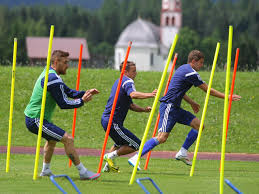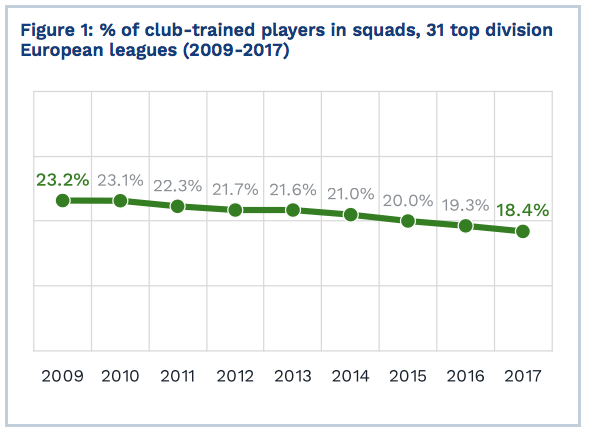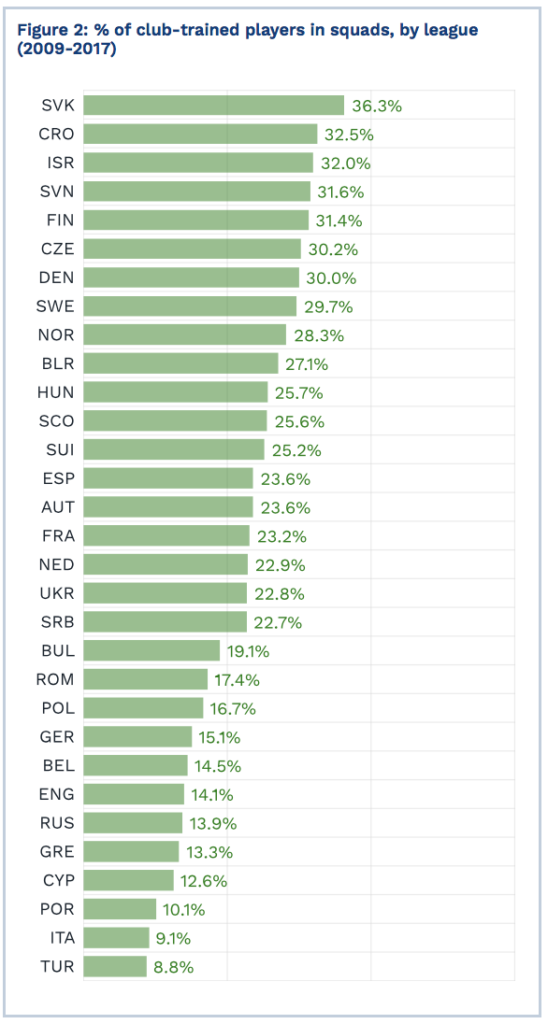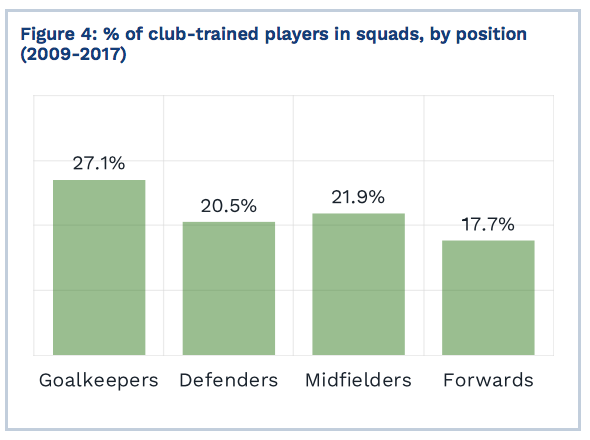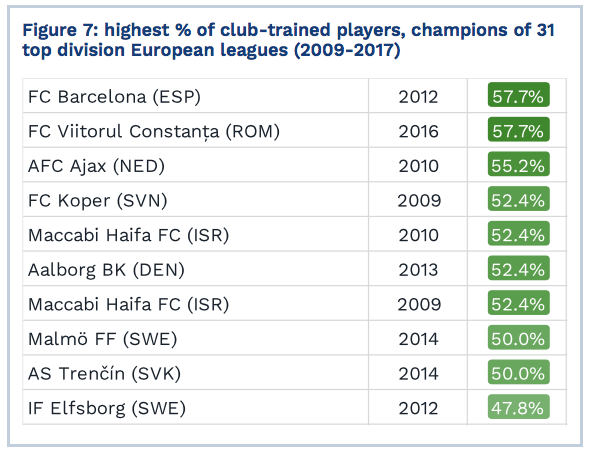March 15 – Training your own talent is no guarantee of success at club level though the stats suggest that it gives a slight advantage. Players who spent at least three years between the ages of 15 and 21 in the club accounted for almost 25% of champion winning team squads, compared to only about 20% for all clubs surveyed.
But overall the data for club trained players in first team squads shows a decline since 2009 in the 31 European top divisions surveyed by the CIES Football Observatory.
The data shows a drop in the proportion of club-trained players in squads from 23.2% in 2009 to 18.4% in 2017. “This finding highlights the intensification of the mobility of footballers from an early age, as well as the ineffectiveness of measures put into place to encourage the employment of home-grown footballers,” say the report authors.
Looking at the leagues by country, seven countries have over 30% of their players as club-trained, with Slovakia leading the way with 36.3% followed by Croatia with 32.5%.
The highest ranked of the Big 5 leagues is LaLiga at 14th (23.6%), followed by France’s Ligue 1 (16th – 23.2%). The Bundesliga (15.1%), Premier League (14.1%) and Serie A (9.1%) are all in the bottom 10.
Only the Turkish Süper Lig (8.8%) is below the Italians. Mediterranean countries occupy the bottom five positions of the rankings: Turkey, Italy, Portugal, Cyprus and Greece.
While the figures don’t conclusively prove that club-trained bring success, the report authors say a strong academy is still a measure of the health of a club and a platform for its sustainability.
“While having a well performing youth academy does not lead directly to success, the report shows that it is a good indicator of the club’s ability to look to the future. The existence of a powerful youth setting is also a good indicator of the club’s strength as a territorially embedded organisation. Beyond short-term results, investing in youth training can be considered a gauge for the sustainable development of the club as an institution,” say the authors.
See the full report at http://www.football-observatory.com/IMG/sites/mr/mr33/en/
Contact the writer of this story at moc.l1714082032labto1714082032ofdlr1714082032owedi1714082032sni@n1714082032osloh1714082032cin.l1714082032uap1714082032

